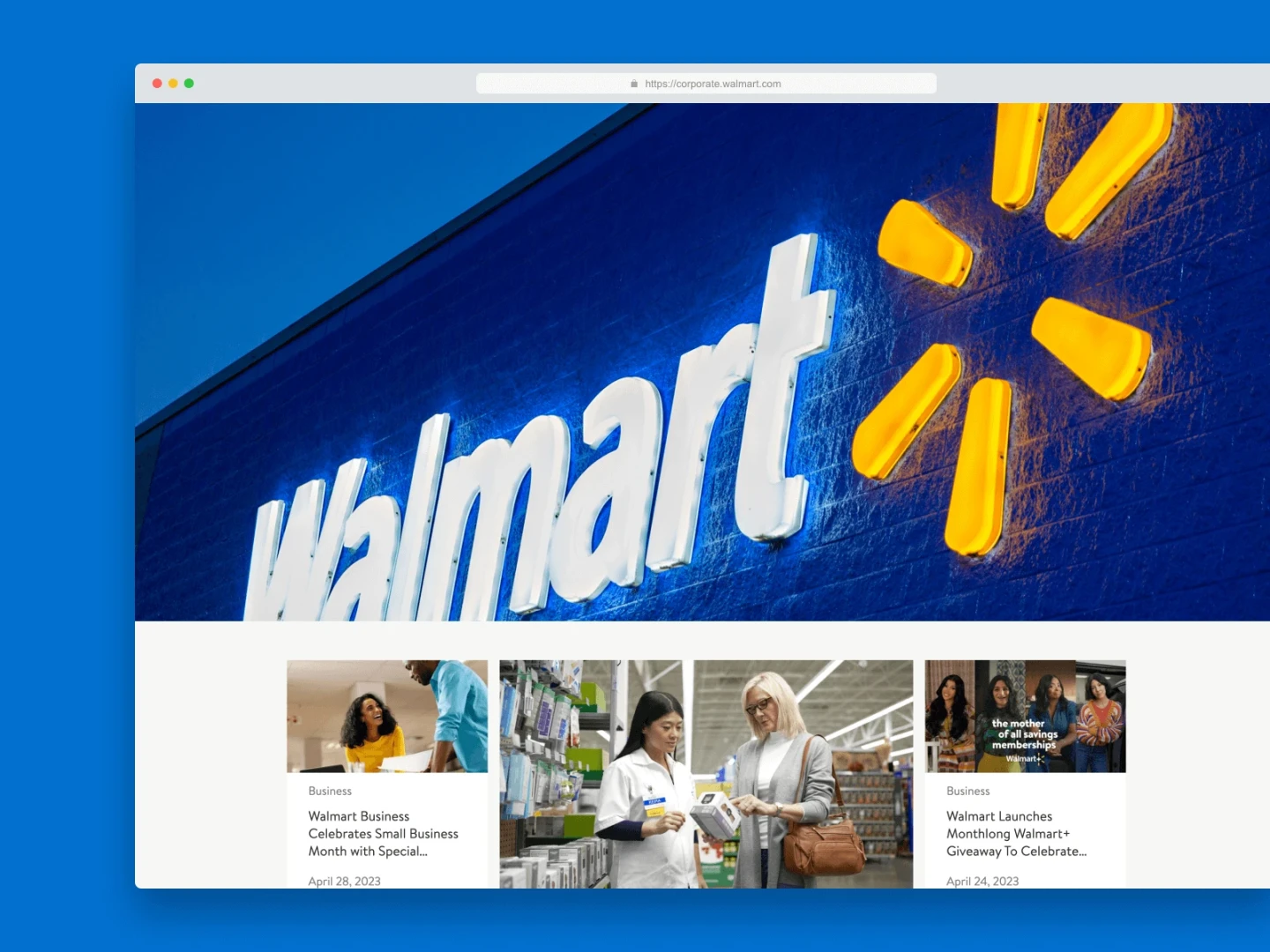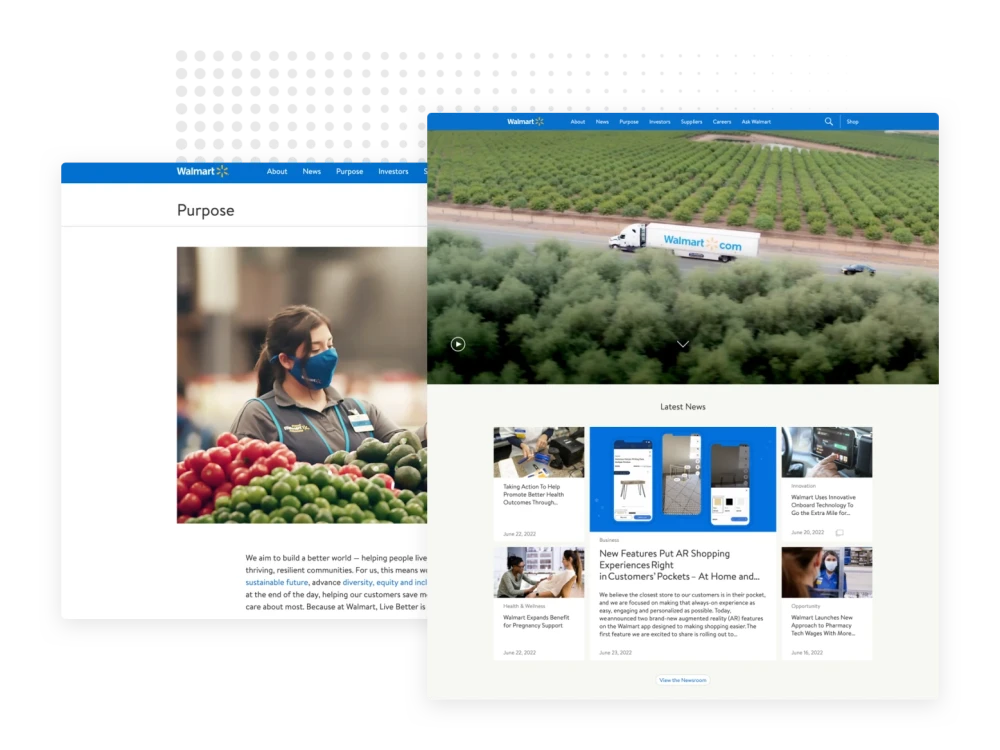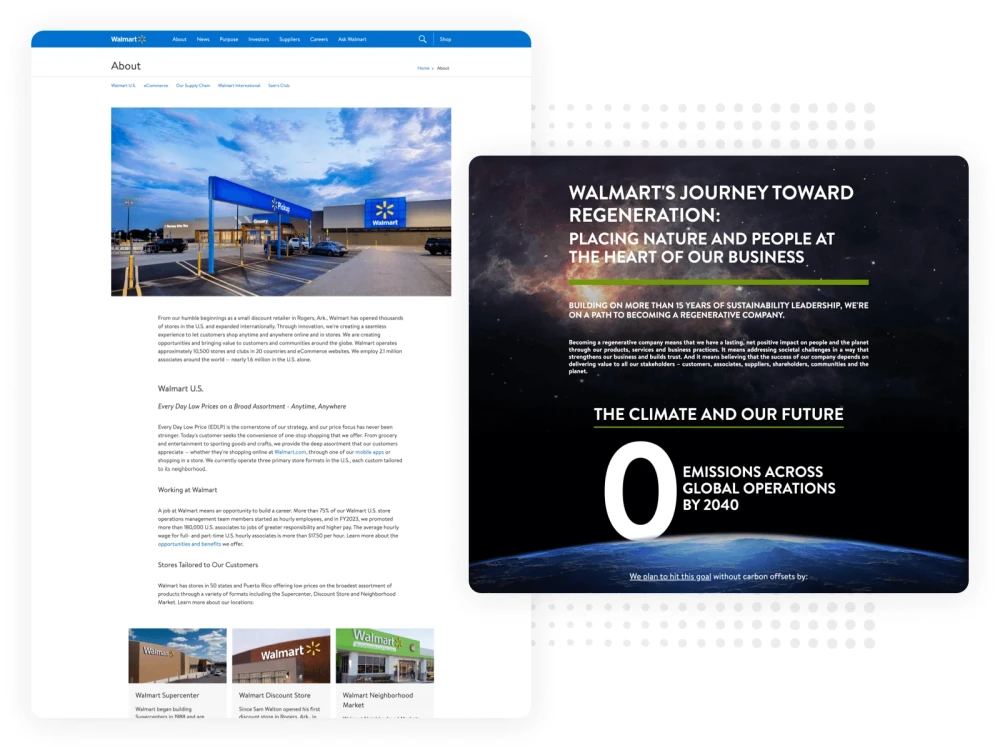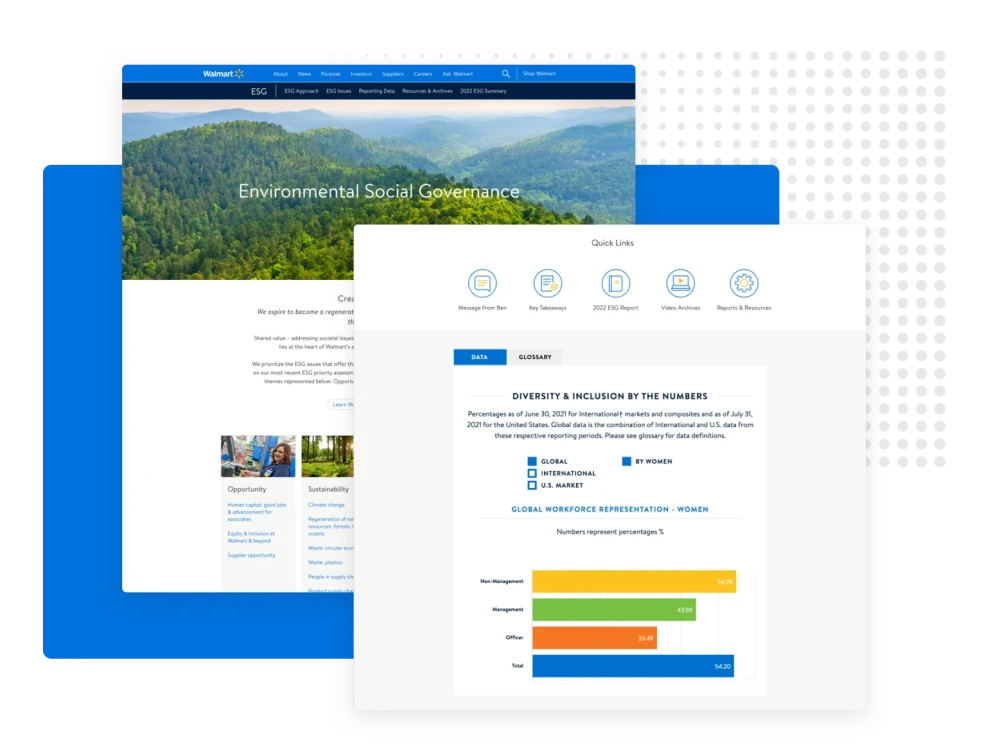Walmart’s storytelling opportunity
Creating connections with customers is easier said than done for most brands. It’s not just about the messaging used to describe products or solutions they have available for customers that make for strong connections—it goes deeper than that. Does the brand connect on an emotional and intellectual level with their customers? Do they have similar values as their target audience, and are they conveying those values in a way that resonates?
Brands today need to speak to both the mind and heart of their key audiences in order to make a connection that lasts, which all leads back to the power of storytelling.
Sticking with a legacy CMS would have constrained our creativity and undermined our confidence. With a modern CMS like Brightspot, we can move and innovate the way we want now, and in the future.
The Walmart challenge
Nearly ten years ago, Walmart, the world’s largest retailer both domestically and internationally, recognized that they had an opportunity to embrace and execute a more effective brand storytelling strategy for their audiences—to tell stories that would engage, impact, and influence their target audience and ultimately create a stronger bond between them and the brand.
Simple shifts in Walmart’s corporate communications strategy such as sharing more about its rich history as well as the company’s passion for community, sustainability, and innovation helped to create a deeper understanding between the brand and their customers, showcasing that they had more in common than meets the eye.
This approach to brand storytelling has only grown in importance over the last decade, with many consumers now looking to support only the brands that share similar values and priorities as them. Harris Poll research commissioned by Google Cloud revealed that 82% of shoppers prefer that a consumer brand’s values align with their own.
Walmart understands the nuances of storytelling and the seriousness of continuously engaging with their customers with messaging and stories that resonate. That’s why they turned to Brightspot 10 years ago and why they continue to partner with Brightspot today—to not only help better tell their stories but to show them as well.
The Brightspot solution for Walmart
Ahead of the curve, Walmart recognized that in order for their corporate communications strategy—with powerful brand storytelling as its foundation—to be successful, they needed a modern content management system (CMS) that could streamline their entire content publishing process.
Their content creation and distribution workflows needed to be more agile, efficient, and adaptable, and they wanted their editors and publishers on their corporate communications team to feel empowered and confident with the end-to-end publishing process. Walmart also required a system with customizable user roles, multi-site and microsite management capabilities, and moreover, the ability to publish to multiple channels from one system.
It’s a long list of requirements, and Brightspot met all of them.
At the onset of the partnership, it only took five months for Walmart’s corporate website to migrate to Brightspot, complete with a fresh design and a new corporate blog. The corporate communications team was able to make updates and changes quickly and easily, keeping the focus on storytelling—on showcasing the people and the stories behind the brand so that customers feel a greater sense of familiarity and connection.
The strategy has proven effective, as has the platform that helps Walmart execute the strategy. In 2020, Walmart was managing eight global corporate websites from the Brightspot CMS, all displaying the heart and soul behind the massive, international brand.
The outcome for Walmart
Fast forward to today, Walmart now has 16 sites managed through the Brightspot platform, all telling important stories across the company’s various initiatives, from culture, diversity, equity and inclusion efforts to environmental, social and governance (ESG) programs. Walmart recognizes that their customers care about these initiatives just as much as they do, and they have an effective platform to showcase their stories around them through Brightspot.
What’s more, it doesn’t take a lot of effort to bring these stories to life—a new site can be deployed with an existing Walmart theme in minutes, and creating a homepage and supporting pages would take an experienced editor only a couple hours.
Walmart changed how it creates and publishes content, evolving from simple posts into powerful brand storytelling, and they continue to push the envelope and elevate their strategy so that connections aren’t just created but that they grow in strength and with meaning.
This kind of powerful storytelling is all backed by Brightspot, a platform that grows as the business grows, that evolves as the brand evolves, and that understands the true value of connection.








